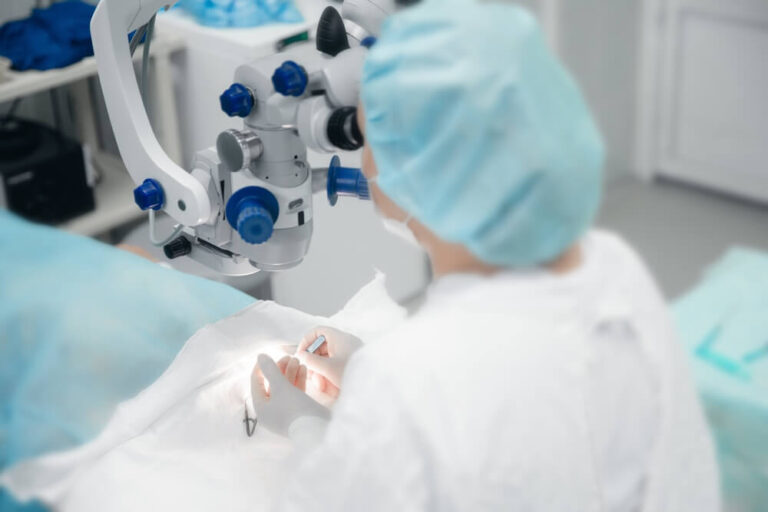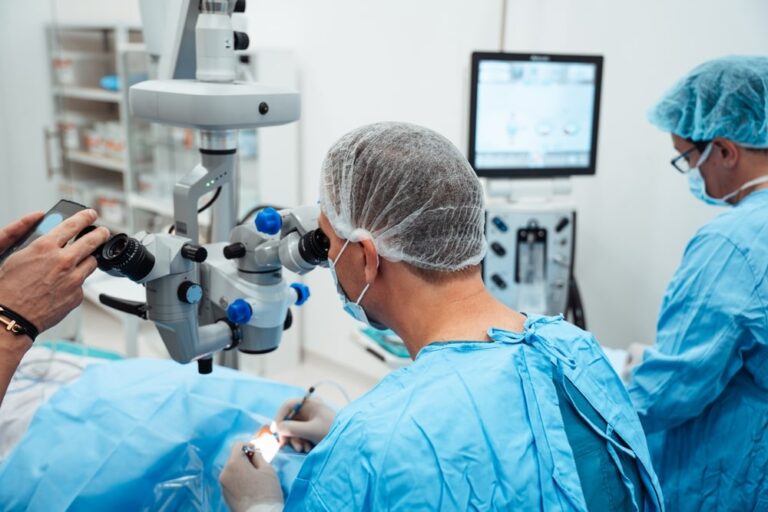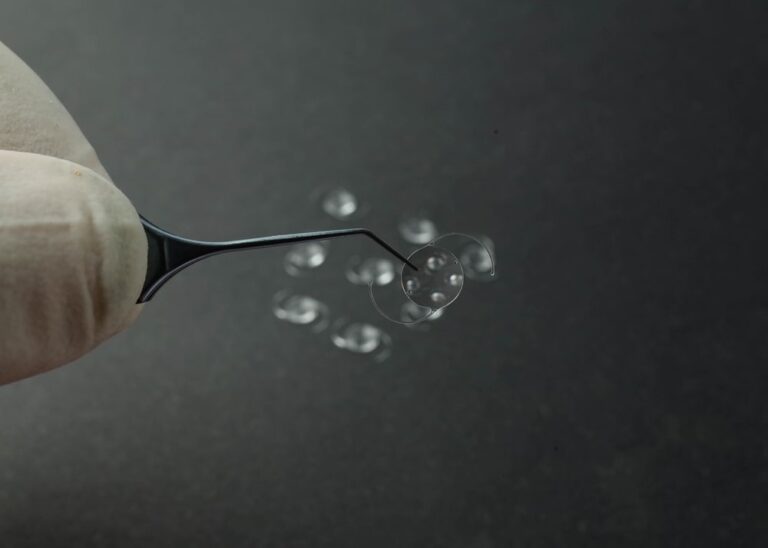Clear Lens Exchange (CLE) also known as Refractive Lens Exchange (RLE) is a life-changing procedure that offers significant benefits for those seeking to improve their vision without relying on glasses or contact lenses. During CLE, the eye’s natural lens is replaced with an artificial intraocular lens (IOL), allowing for clearer, sharper vision. Although the surgery itself is minimally invasive, understanding the recovery is an essential part of the process to ensure the best possible outcome. Understanding what to expect during the recovery phase will help you feel more prepared and confident as you embark on your journey toward better vision.
What to Expect Immediately After the Procedure
Recovery after Clear Lens Exchange / Refractive Lens Exchange surgery is relatively quick compared to other eye surgeries, thanks to its minimally invasive nature. Most patients experience only mild discomfort, such as slight irritation or a gritty feeling in the eye, which typically subsides within a few hours. It is recommended that all patients go home, eat something, and immediately try to sleep for 3-4 hours. This is the period of time the eye may be more light sensitive or gritty. If you sleep off this first 3-4 hours, your overall discomfort will be very minimal. You may also experience blurred vision immediately after the surgery, but this is temporary as the eye begins to heal. It is normal for your vision to fluctuate during the first few days, and it may take some time for your eyes to adjust to the new lens. But in general, the next day patients are pleasantly surprised with their recovery, and by the afternoon many patients realize the postoperative eye is the better of the two eyes!
Dr. Lee Katzman at Alvarado Eye Associates will provide specific aftercare instructions based on your customized surgical approach, but patients are generally advised to rest for the first 24 hours. To prevent irritation or injury, avoiding rubbing or pressing on the eyes during the first few days is essential. A follow-up appointment will be scheduled one day and one week after surgery to monitor the healing process and assess your progress.
Managing Pain and Discomfort During Recovery
While Clear Lens Exchange surgery is considered relatively painless, some mild discomfort is expected during recovery. Post-operative pain is usually minimal and can be managed with over-the-counter pain relievers recommended by Dr. Katzman. Patients will also be prescribed anti-inflammatory eye drops to reduce swelling and prevent infection.
In addition to taking prescribed medications, patients are advised to avoid strenuous activities for a few weeks. This includes activities such as heavy lifting (over 35 lbs), bending over (keep your eyes above the level of your waist), or vigorous exercise that could strain the eyes. Walking intensely is fine, but activities that could lead to falling are not encouraged (falling off of a bike within days of surgery, for example, would not be ideal). Additionally, it is recommended to avoid dusty, dirty environments, as well as hot tubs, swimming pools, or the ocean for 2 full weeks after each eye. During the initial recovery period, it is also recommended that patients wear protective sunglasses outdoors to shield their eyes from dust, wind, and bright light. Showering and washing your hair/ face is ok as early as postoperative day one, as long as your doctor indicates that you are healing appropriately.
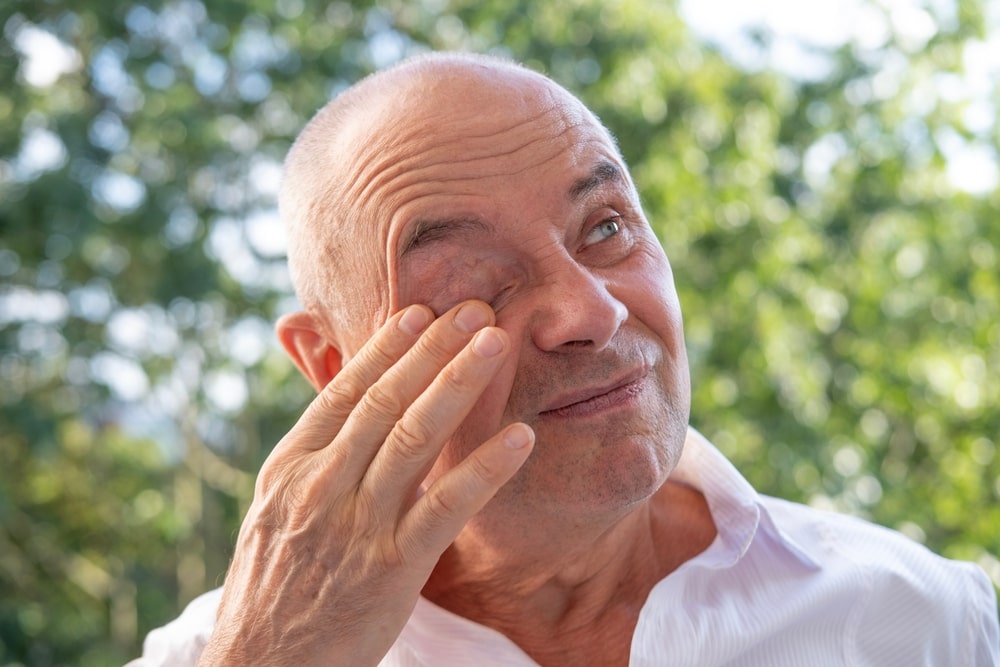
A Step-by-Step Look at the Recovery Timeline
The recovery timeline for Clear Lens Exchange is generally short, with most patients experiencing significant improvement in their vision within 48 hours. However, full recovery can take several weeks as the eyes adjust to the new lens. Below is an overview of what to expect during the recovery process:
- Day 1 to 3: Vision may be blurry, and mild discomfort or irritation may be felt. Most patients can resume light daily activities, but rest is important. Most people can return to work in 48 hours. Driving usually within 24-48 hours.
- Week 1 to 2: Most patients report clear vision by this time, and any initial discomfort should be minimal. Continue following post-operative care instructions and avoid activities that could strain the eyes. You can resume cosmetics/make-up after 7 days.
- Week 4 and Beyond: Full recovery can take a month or more, with final visual outcomes settling in. Follow-up visits will be essential to monitor progress, and patients are encouraged to communicate with Dr. Katzman if they have concerns about their recovery.
Long-Term Care and Adjustments
While most recovery happens within the first few weeks, long-term care is crucial to maintaining optimal vision and health. Many patients find that their vision improves over the months following surgery as the eyes adjust to the new intraocular lens (IOL). Attending all follow-up appointments with Dr. Katzman is important to ensure that the healing process is progressing as expected.
If you experience any unusual symptoms, such as persistent pain, increased redness, or significant vision changes, it’s important to contact Alvarado Eye Associates right away. These issues are rare but can occur and may require attention to prevent complications. Additionally, some patients may require further adjustments to their IOL prescription months after surgery, especially if they opt for premium lenses designed to reduce dependence on glasses for near and far vision.
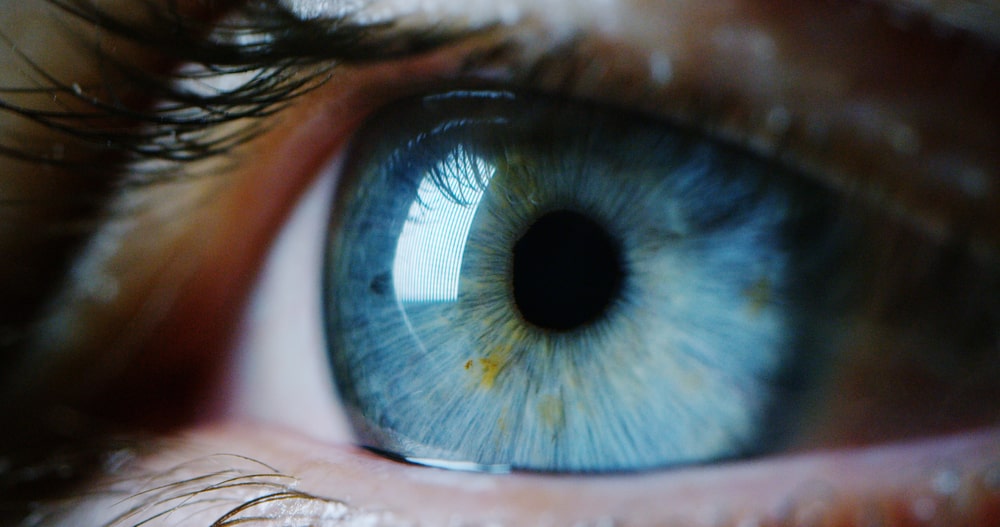
Factors That Can Impact Recovery Time
Several factors can influence how quickly a patient heals after Clear Lens Exchange surgery. Age, overall health, and any pre-existing eye conditions like Dry Eye Disease can all impact the recovery process. Older adults or individuals with other health issues, such as diabetes or high blood pressure, may experience slower healing times or require additional monitoring after surgery.
The type of intraocular lens chosen also affects the recovery timeline. Patients who select premium lenses, such as multifocal or toric lenses, may require a more extended adjustment period as their eyes adapt to the new lens. However, the benefits of these advanced lenses—such as reduced dependence on glasses or contact lenses—often outweigh the additional recovery time.
Post-Operative Care and Aftercare Tips
Proper aftercare is essential for a smooth recovery after Clear Lens Exchange surgery. To help ensure optimal healing, patients should follow these general aftercare guidelines:
- Take prescribed eye drops as directed: These will help prevent infection and reduce inflammation. This is likely to include over-the-counter artificial tears
- Avoid rubbing or touching the eyes: This is especially important in the first few weeks of recovery to prevent complications.
- Use protective eyewear: Sunglasses are essential when going outside to protect your eyes from bright light and UV rays.
- Attend follow-up appointments: These allow Dr. Katzman to monitor the healing process and ensure that your vision improves as expected.
Factors to Consider in Recovery After Clear Lens Exchange
- Age and Health: Older adults or individuals with pre-existing health conditions may experience a longer recovery time.
- Type of IOL: Premium lenses, such as multifocal or toric lenses, may require a longer adjustment period as the eyes adapt.
- Post-operative Care: Properly using prescribed eye drops and protective eyewear and following all aftercare instructions will promote a smoother recovery.
A Smooth Recovery for Improved Vision
Recovery from Clear Lens Exchange / Refractive Lens Exchange surgery is typically smooth and quick, with most patients experiencing significant improvements in their vision within a short time. By following Dr. Katzman’s post-operative care instructions and attending follow-up appointments, patients can expect optimal results and a faster recovery. If you’re considering Clear Lens Exchange at Alvarado Eye Associates in San Diego, don’t hesitate to reach out to learn more about the procedure and what to expect during your recovery. Dr. Katzman and our team are dedicated to providing personalized care and ensuring your successful journey to better vision.

